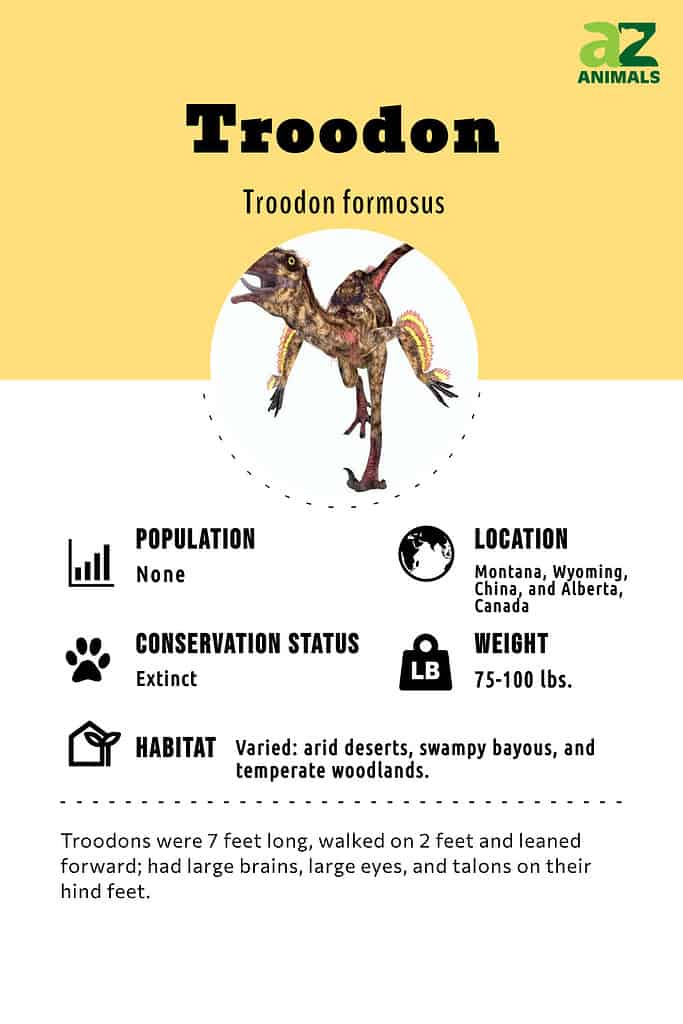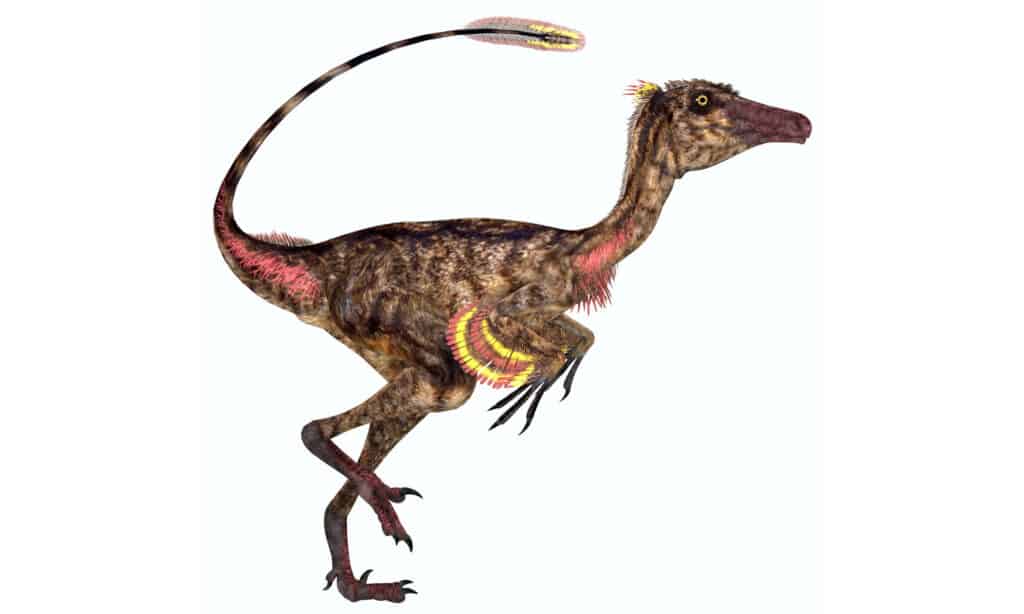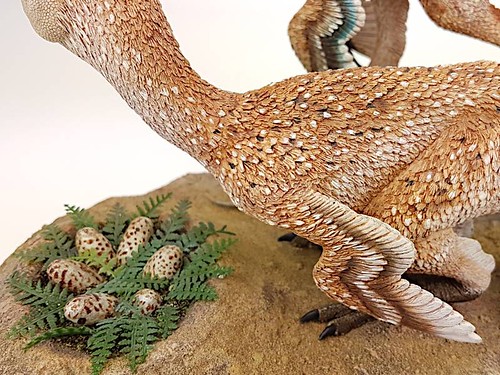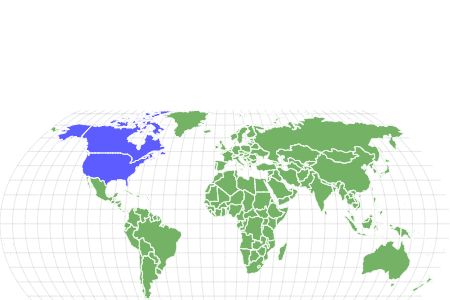Troodon
Troodon formosus
Troodon formosus means "wounding tooth" in Greek, a name that describes its serrated teeth.
Advertisement
Troodon Scientific Classification
- Kingdom
- Animalia
- Phylum
- Chordata
- Family
- Troodontidae
- Genus
- Troodon
- Scientific Name
- Troodon formosus
Read our Complete Guide to Classification of Animals.
Troodon Conservation Status
Troodon Facts
- Fun Fact
- Troodon formosus means "wounding tooth" in Greek, a name that describes its serrated teeth.
- Biggest Threat
- Adults fought other troodons over mates and food. Troodon eggs were eaten by dinosaurs that liked to eat eggs.
- Most Distinctive Feature
- Serrated teeth
- Distinctive Feature
- It walked on two feet and leaned forward
- Diet
- Omnivore
- Favorite Food
- Meat from other dinosaurs, plants, seeds, and nuts
- Special Features
- Their brains were large relative to their body size, so they were probably smarter than other animals of that time.
- Location
- North America and Asia
- Nesting Location
- On the ground
View all of the Troodon images!
The Troodon is a dinosaur that is distantly related to the feathered friends we see today.

These prehistoric animals resembled and behaved like birds, making them an important link that teaches scientists more about how birds evolved. They lived in the Late Cretaceous period, around 77 million years ago. Troodon has caused quite a stir in the scientific community, however. Some scientists maintain that Troodon specimens actually fall into another genera. Learn more and decide for yourself.
Troodon Classification and Scientific Name
Troodon formosus is the only species within the Troodon genus. Its name means “wounding tooth” in Greek. It was named by American paleontologist Joseph Leidy in 1856. He chose that name because its teeth, which were a critical part of learning more about this animal, had serrated edges perfect for wounding other animals.

Troodons had teeth with serrated edges, which lead to their name that means “wounding tooth.”
©iStock.com/CoreyFord
Troodon is in the Troodontidae family. This family includes other bird-like dinosaurs. Other genera within the family include Mei and Sinovenator. As scientists learn more about these ancient animals, they make more definitive links between dinosaurs and modern birds.
Troodon is a theropod and belongs to the Theropoda clade. This refers to dinosaurs that had three toes on each limb and hollow bones. While Troodons are small, other therapods are giant and formidable. After all, the king of the dinosaurs, Tyrannosaurus rex, was a therapod. The entire lineage follows:
Troodon
| Kingdom | Animalia | |
| Phylum | Chordata | |
| Clade: | Dinosauria | |
| Clade: | Saurischia | |
| Clade | Therapoda | |
| Family | Troodontidae | |
| Genus | Troodon | |
| Species | Troodon formosus |
Description and Size
Not very much is known about Troodons that scientists can agree on. Tooth specimens tell them very interesting information about the diet that these dinosaurs may have eaten. The prevailing thought is that these dinosaurs were small and bird-like, probably around 7 feet long. Like other theropods, it walked on two feet and leaned forward. This meant that it only stood around 4 feet tall at the hip.

Troodons were relatively small at 7 feet long and weighed only 75-100 lbs.
©iStock.com/CoreyFord
There is a lot of variation in estimates of Troodon size and length based on the various specimens found. Some scientists think that there was a lot of size variation or possible multiple species of Troodons. Others think that these various specimens actually belong to different dinosaurs.
Based on most estimates, Troodon probably weighed between 75 and 100 pounds. While they were not as large as other theropods, they were still much larger than modern birds. They also had large brains relative to the rest of their size. They were probably smarter than other animals of their day.
Troodon had large eyes that faced forward. These would have helped them see a lot, aiding in hunting and survival. It is possible that they were more active at night or in low-light environments. Based on the locations of fossilized remains, they lived in colder climates that were not sunny.
Troodons also had talons on their hind feet, similar to many other therapods. The velociraptor comes to mind, well-known for its hind claw. This probably helped the Troodon attack prey and well as fight with other Troodons over mates.
Diet
The discovery of fossilized teeth tells scientists a lot about what kinds of foods Troodons might have eaten. The serrated edges of the teeth meant that they were likely omnivores. They could have eaten meat from other dinosaurs during the Late Cretaceous. Their large, forward-facing eyes were ideal for hunting at night when other dinosaurs would have had a harder time seeing them. They probably also ate plants, seeds, and nuts.
Not all studies agree on the exact diet of the Troodon. One interesting aspect about these dinosaurs is that they evolved with many features that were ideal for different types of diets. Their eyes and grasping hands made them efficient hunters. Their teeth could chew softer meats, another feature that worked well for a carnivorous diet. However, the serrated edges are similar to other dinosaurs of their time that were exclusively herbivores, such as the Pachycephalosaur or Stegoceras.
It is unlikely that Troodons were true herbivores. Their keen eyesight, well-developed brains, and predatory features would probably not have evolved if they had not needed and used them. Most likely, they were omnivores that ate what they could when they could, including both meat and plants.
Habitat
The tooth specimen of Troodon dates back to the Late Cretaceous, around 77 million years ago. It was found in the Judith River Formation in Montana. This rock formation includes many fossils from the Late Cretaceous, with specimens ranging from 80 to 75 million years ago.

Troodons have been found in Montana, Wyoming, China, and Alberta, Canada.
It was over 50 years before paleontologists found more Troodon fossils. Other specimens were discovered in the Dinosaur Park Formation in Alberta, Canada, the Hell Creek Formation in Montana, and the Lance Formation in Wyoming. However, there is some skepticism about whether or not these fossils actually belong to Troodons or if they are just very similar.
Other, early forms of Troodon have been found in China as well. Its habitats in North America and Asia vary wildly from arid desert to swampy bayous to temperate woodlands.
These theropods almost certainly went extinct at the end of the Cretaceous following a mass extinction event. An asteroid hit the earth in present-day Mexico, causing a major change in both the environment and ecosystem of the entire planet. Eventually, around 75% of all species on earth went extinct. This included the Troodon as well as the other dinosaurs.
Threats and Predators
Larger carnivores during the Late Cretaceous would have found the Troodon a tasty meal. Tyrannosaurus rex and Spinosaurus were some of the largest hunters of the time. T. rex also lived in present day Montana and Wyoming, two locations that were habitats for Troodons.
Troodons likely fought with each other as well. Whether over food or mates, adult Troodons could have used their talons to engage in fights to show their dominance. Even if they did not kill each other outright, an injury could have proved fatal. It also may have made them easier prey to larger carnivores.
Young Troodons
Female Troodons laid clutches of 16-24 eggs, which they housed in a nest on the ground. They probably incubated these eggs with their own body heat until they were ready to hatch. Unfortunately, their location also made them easy targets for dinosaurs that liked to eat eggs. It is estimated that only a few eggs made it to hatching during each cycle.

Troodon laid 16 – 24 eggs and warmed them with their own body heat until they hatched.
Discoveries and Fossils
The first Troodon discovery was actually a tooth. The serrated tooth was found in Montana’s Judith River Formation in 1856. In the 1930s, other fossilized bones were discovered in Alberta, Canada that told scientists more about what these dinosaurs looked like and illustrated their similarities with birds.
However, some other specimens found over the years might have actually belonged to Troodon. Following reclassification of existing specimens, Stenonychosaurus was rolled into the Troodon genus and considered an example of Troodon formosus rather than a different species. You may still see Troodon and Stenonychosaurus referred to as synonyms in some scientific research.
Many of these specimens are from far away or different times than the known and established Troodon type species. Because the type species is based only on teeth, it is difficult to determine for certain whether fossils that are more complete belong to the same species. However, it is unlikely that fossils separated by a lot of time and space belong to the same species.
Now, scientists continue to research and reclassify dinosaur fossils based on new evidence that they find. This includes the Troodon. They believe that the previous classification of Stenonychosaurus is more accurate and that the two are actually different species. By discovering and analyzing more fossils, they can learn even more about these interesting prehistoric creatures.
Extinction
A major extinction event around 66 million years ago marked the end of the Cretaceous Period and the end of the Troodons as well. An asteroid struck the earth and created a crater that we can still see today in Mexico. The Chicxulub Crater is located beneath the Yucatan Peninsula.
What followed made it impossible for the Troodons and most other species to survive. Close to the impact site, a mile-high tsunami wiped out many animals and plants. Wildfires erupted and sulfur entered the atmosphere. Ash and debris also covered a major portion of the earth and obscured the sun. This led to overall cooling that resulted in fewer plants, fewer herbivores, and eventually fewer carnivores.
While the Montana Troodons were far from the impact site, they certainly felt the effects of the asteroid very quickly. The entire earth’s atmosphere and environment changed very rapidly.
Similar Animals to The Troodon
- Chickens: Modern birds have a lot in common with Troodons. Their hollow bones, three-toed limbs, superior intelligence, and nesting behaviors are all reminiscent of birds. Many scientists think that Troodons were a crucial evolutionary link between dinosaurs and birds.
- Stenonychosaurus: These dinosaurs are so similar to Troodons that, for many years, scientists believed they were the same species. Now they are classified independently. Stenonychosaurus fossils were found in Alberta, Canada and also lived during the Late Cretaceous.
- Saurornithoides: These dinosaurs were fellow members of the Troodontidae family that also lived during the Late Cretaceous. Fossils have been found in Mongolia.
Troodon FAQs (Frequently Asked Questions)
When did Troodon live?
These theropod dinosaurs lived during the Late Cretaceous Period. Known specimens date to around 77 million years ago, although it is likely that these dinosaurs lived until the mass extinction event that marked the end of the Cretaceous and the extinction of the dinosaurs 66 million years ago.
How big was a Troodon?
Troodons were around 7 feet long from their snout to their tail and weighed between 75 and 100 pounds. They stood around 4 feet tall at the hip. There are numerous specimens that may be Troodons, however, and they vary widely in size.
Thank you for reading! Have some feedback for us? Contact the AZ Animals editorial team.
Sources
- National Geographic / Accessed June 9, 2022
- Thought Co. / Accessed June 9, 2022
- Philip J. Currie Dinosaur Museum / Accessed June 9, 2022
- Insider Magazine / Accessed June 9, 2022


















